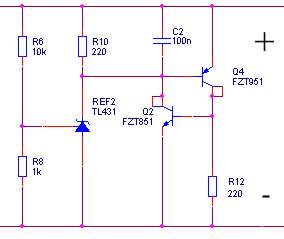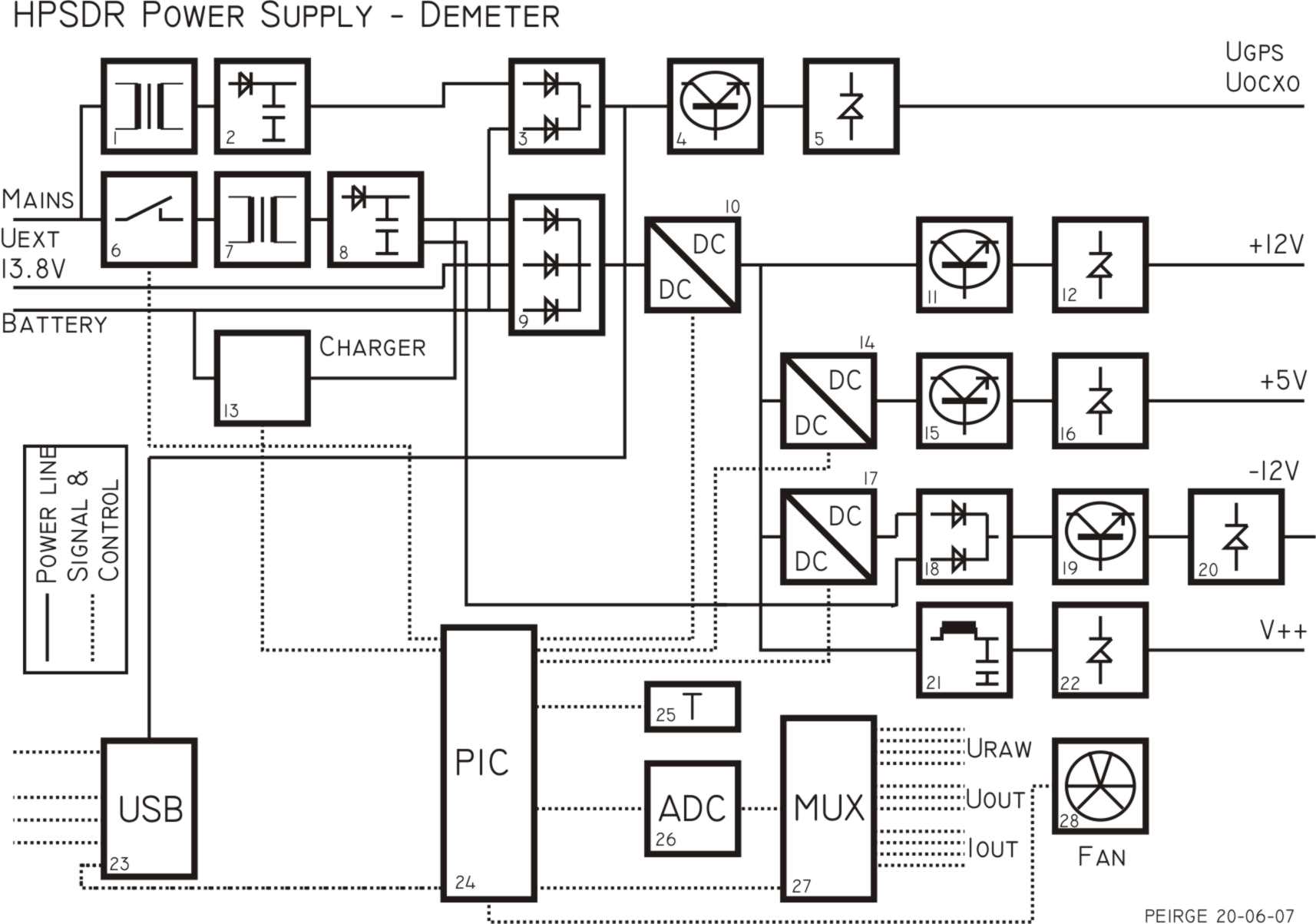Difference between revisions of "DEMETER"
(→Design Ideas) |
(→Design Ideas) |
||
| Line 211: | Line 211: | ||
Design notes: | Design notes: | ||
| − | [[ | + | [[Tiny_Demeter_design.pdf]] |
Preliminary (partial) design: | Preliminary (partial) design: | ||
| − | [[ | + | [[Schematic_Prints.pdf]] |
--[[User:PE1RGE|PE1RGE]] 08:36, 1st August 2008 (PDT) | --[[User:PE1RGE|PE1RGE]] 08:36, 1st August 2008 (PDT) | ||
Revision as of 07:22, 8 August 2008
Contents
[hide]Demeter - HPSDR Power Supply & Tiny Demeter
Project Leader: Jeroen, PE1RGE
"Demeter" is the project-name for the HPSDR power supply. Although power supplies are widely available, Demeter will be specifically designed for the HPSDR project.
On the 13th of June 2008, Tiny Demeter is added to the Demeter page. Tiny Demeter has a simpler design. Tiny Demeter will be more suitable for experimenters and allow us to gain some experience before constructing Demeter.
Further information will be presented on this page when it becomes available.
73 Jeroen PE1RGE
Result of the discussion on the HPSDR mailing-list (11th June 2007):
DEMETER SPECIFICATIONS
Input
13.8 Volt DC (always 13.8 V or is there a supply range, see remark below) 110 Vac (mains) 230 Vac (mains) Battery (13.8 Volt) input with automatic switchover
Input connector
Powerpole connector for DC 13.8 Volt Mains connector: National standard
Output voltages
Remote switchable voltages +5 Volt @ …. Amps +12 Volt @ ….. Amps -12 Volt @ ….. Amps
Standby supply (for GPS-engine and OCXO)
Constant on +5 Volt +15 Volt +24 Volt (depends on OCXO used, if possible user definable/adjustable)
Output connector
ATX-connector DIN 41612 (Atlas connectors)
Protection
Input protection (high/low voltage, polarity) Output protection (current limiting, voltage crowbar)
Monitoring
· Input voltage · Output voltage · Output currents · Temperature
Power supply communication
Atlas backplane USB-bus 1 wire interface (controlled by a board on Atlas) Dumb-interface using the pins T7 and T8 on the Atlas
Connection to the HPSDR
Using the ATX power connector, communication via the USB bus Using the DIN41612 connector using the Atlas backplane for communication
Position of the power supply
On the Atlas backplane In a separate box (outside/inside Pandora)
HPSDR configuration
Ozymandias - interface module Mercury – receiver (5V @ 500mA, 12V @ 200mA, -12V not used) Penelope – transmitter (5V @ 300mA, 12V @ 200mA, -12V not used)) Alexiares - RF Bandpass Filters Gibraltar - frequency standard Epimetheus - antenna and other switching
Measured: Ozy + Janus: +12v @ 200mA, +5v @ 180 ma, -12v @ 70 ma
Questions/remarks
Switching or Linear? Internal/External? Power dissipation (Convection cooling/ forced air-cooling)? Do we need computer monitoring of voltages and currents? Include an USB-HUB (use one of the ports for the power supply communication)? Configuration (to use or not to use the SDR-1000)? People who use it in combination with the SDR-1000 need less power from the power-supply and are using a custom built supply or the SDR-1000 power supply. Will the 13.8Volt really be 13.8Volt or “something” between 11.0 Volt and 15 Volt? In other words: How many people are going to use the HPSDR mobile?
Linear (A “lot of heat”, not “green”, easy to construct and trouble-shoot)
Switching (Less heat, more “green”, more noise, more difficult to construct)
Transformers: From my opinion there will always be a normal mains-transformer, both in the switching and the linear power supply option. Building a switcher for 110Vac/230Vac is too dangerous and complicated (safety regulations) for (less experienced) home-builders. The switcher will be situated in the low-voltage part.
Demeter block diagram legenda: 1. Standby transformer – Used for the GPS and OCXO 2. Standby rectifier and buffercapacitor 3. Switch – Switches between mains and battery power 4. Linear regulator 5. Overvoltage protection 6. Solid state (?) mains power switch 7. Power transformer 8. Power rectifiers and buffercapacitors (positive + negative voltage) 9. Switch – Switches between battery, mains and external power 10. Step-up converter 11. Linear regulator +12Volt 12. Overvoltage protection +12Volt 13. Charger (optional) 14. Step-down converter 15. Linear regulator +5Volt 16. Overvoltage protection +5Volt 17. Inverter – generates negative supply from the positive supply 18. Switch – Switches between inverter and mains power 19. Linear regulator –12Volt 20. Overvoltage protection –12Volt 21. Passive filter 22. Overvoltage protection for U++ (Could be used for a PA) 23. USB-Hub – one port used for communication with Demeter 24. PIC controller 25. Temperature sensor(s) 26. Analog to digital converter (for voltage and current) 27. Analog multiplexer 28. Controlled fan (forced air cooling)
Tiny Demeter
Based on the Teamspeak Session from 31st of May 2008 the idea arose to develop a simpler power supply. The working title for this supply became Tiny Demeter.
This supply could be handy for: - experimenters - people who want a simple configuration - temporary solution unitl Demeter becomes available
Tiny Demeter uses the station power supply as main-source. It expects a fairly well regulated 13.6 till 13.8Volts. From this voltage it will generate:
- +12V @ 1Amp
- +5V @ 1.5Amp
- -12V @ -0.3Amp
Current rating can be increased by adding multiple regulating power transistors.
The regulators for Tiny Demeter (and Demeter) will be build from discrete components. The reason for this are the following:
- It allows "current scaling", by adding more power transistors the current handling can be increased
- A discrete regulator gives better temperature stability
- A discrete regulator gives lower output-noise
From the basic idea of having just a few linear regulators the following extras were added:
- Input voltage monitor; This will warn the user when the input power source voltage is too low. (If the input voltage is below a certain threshold the +12V stability cannot be guaranteed, probably causing problems in the HPSDR system.)
- Temperature regulator/monitor; Due to the nature of linear regulators the power dissipation will be around 15 Watts (without extra regulating transistors).
- Crow-bars for each supply voltage; For added safety
- Shunt-resistors to measure the current for each supply-voltage
- Input protection circuit; probably consists of a fuse and a diode OR a fuse and an electronic switch (switch only closes when the input voltage has the right polarity).
The board itself will have a:
- An ATX 20pin power connector attached to its PCB, so it plugs in directly on Atlas
OR
- An ATX 20pin power connector attached to a short cable and mounting brackets which can be used to mount Tiny Demeter on the mounting holes of Atlas
The proposed schematic block-diagram can be found below:
Block Diagram
Tiny Demeter block-diagram
Design Ideas
Here some references are made to components and ideas which I have in mind for the Tiny Demeter design:
* Transformers for the switcher:
- www.bourns.com/pdfs/pm600_610_620_series.pdf
- www.cooperbussmann.com/3/CoiltronicsFinder.html
* Linear regulator
- discrete: see schematic below
- Linear Technology LT3080
* Crow Bar
 This image shows the (basic) schematic diagram of the crowbar circuit. Component values are for a voltage around 20V.
.
.
This image shows the (basic) schematic diagram of the crowbar circuit. Component values are for a voltage around 20V.
.
.
The principle of the regulator with the discrete components:
The best topology for the switcher has to be determined. At this moment a Push-Pull configuration looks very promising. This will generate the least harmonics as the duty-cycle of the switcher is close to 50%. To get an idea of a push pull switcher one can look here: http://sound.westhost.com/project89.htm
Please note: THIS IS NOT THE DESIGN FOR DEMETER, ONLY AN EXAMPLE OF THE TOPOLOGY.
Preliminary design
The following documents contain a part of the design of Tiny Demeter. "Tiny Demeter design.pdf" contains (some) engineering notes. The file "Schematic Prints.pdf" contains the schematic of the switcher, however without the correct values for the components. You can use it to get a general idea of the DC/DC converter design. More details of the design will be added soon!
Design notes: Tiny_Demeter_design.pdf
Preliminary (partial) design: Schematic_Prints.pdf
--PE1RGE 08:36, 1st August 2008 (PDT)

